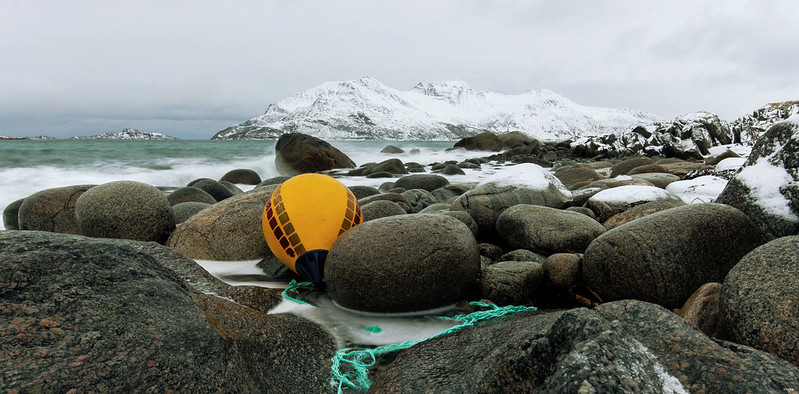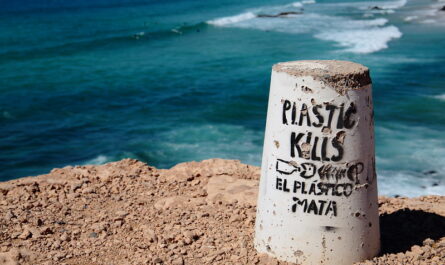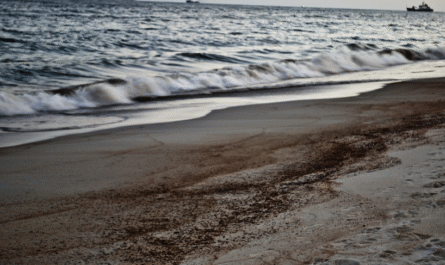The Atlantic Ocean, one of Earth’s most vital ecosystems, is facing a growing threat from marine debris. This debris, often consisting of plastic waste, discarded fishing gear, and other pollutants, is accumulating in vast patches across the ocean’s surface and depths. These garbage patches not only endanger marine life but also disrupt ecosystems and human economies.
This article explores the origins of marine debris, the mechanisms driving the formation of garbage patches in the Atlantic, their impact on marine ecosystems and coastal communities, and innovative solutions to tackle this pressing issue.
Understanding Marine Debris: The Global Context
1. What is Marine Debris?
Marine debris refers to any human-made material that ends up in oceans, seas, or other large water bodies. It includes:
- Plastics: Bags, bottles, microplastics, and synthetic fibers dominate ocean debris.
- Fishing Gear: Nets, lines, and traps abandoned or lost at sea.
- Other Materials: Metal cans, glass bottles, rubber tires, and even derelict vessels.
2. Sources of Marine Debris
Marine debris originates from various sources:
- Land-Based Sources: Urban runoff, littering, poorly managed landfills, and industrial waste contribute significantly to marine debris.
- Ocean-Based Sources: Fishing activities, shipping, and offshore industries add debris directly to the ocean.
- Natural Events: Storms and floods wash land-based debris into the sea.
3. The Growing Problem of Plastic Pollution
Plastics account for approximately 80% of all marine debris. Their durability and lightweight nature make them easily transportable by ocean currents, leading to their accumulation in remote areas.
Formation of Garbage Patches in the Atlantic
1. The Role of Ocean Currents
Ocean currents, driven by wind, Earth’s rotation, and differences in water temperature and salinity, play a critical role in the formation of garbage patches.
- Gyres: Large, circular current systems, such as the North Atlantic Gyre, trap debris within their vortex-like structures.
- Transport Mechanisms: Currents carry debris from coastal regions to open ocean zones, where it becomes concentrated in gyres.
2. Major Garbage Patches in the Atlantic
The Atlantic Ocean hosts two significant garbage patches:
- North Atlantic Garbage Patch: Located between North America and Europe, this patch is a hotspot for microplastic accumulation.
- South Atlantic Garbage Patch: Situated between South America and Africa, it is smaller but similarly dense with debris.
3. Microplastics: A Hidden Threat
Microplastics, fragments less than 5 millimeters in size, are a significant component of Atlantic garbage patches. They originate from:
- Degradation: Larger plastic items breaking down into smaller pieces.
- Synthetic Fibers: Released from textiles during washing.
- Microbeads: Used in cosmetics and personal care products.
Impact of Marine Debris on the Atlantic Ecosystem
1. Threats to Marine Life
Marine debris poses severe risks to Atlantic marine species:
- Ingestion: Animals such as seabirds, turtles, and fish mistake debris for food, leading to malnutrition, intestinal blockages, and death.
- Entanglement: Fishing nets and other debris ensnare marine animals, restricting movement and causing injuries or drowning.
- Toxicity: Plastics leach harmful chemicals into the water, affecting the health of marine organisms.
2. Disruption of Ecosystems
Garbage patches disrupt the natural balance of marine ecosystems:
- Habitat Alteration: Floating debris creates artificial habitats, allowing invasive species to colonize new areas.
- Food Web Impacts: Microplastics consumed by smaller organisms enter the food chain, affecting predators at higher trophic levels.
3. Economic Consequences
Marine debris affects coastal economies dependent on tourism, fishing, and maritime industries:
- Tourism Losses: Polluted beaches deter visitors, reducing revenue for coastal communities.
- Fisheries Damage: Entangled fishing gear and contaminated seafood harm the fishing industry.
- Cleanup Costs: Governments and organizations spend millions annually on debris removal efforts.
Human Health Implications
Marine debris impacts human health in several ways:
- Contaminated Seafood: Microplastics consumed by marine organisms can accumulate in seafood, potentially entering the human diet.
- Chemical Exposure: Persistent organic pollutants (POPs) attached to plastics can bioaccumulate, posing health risks.
- Injuries: Sharp debris on beaches or in shallow waters can cause physical harm to beachgoers and swimmers.
Innovations and Solutions to Address Marine Debris
1. International Agreements and Policies
Global cooperation is essential to combat marine debris:
- UN Sustainable Development Goal 14: Calls for the conservation and sustainable use of oceans, including reducing marine pollution.
- MARPOL Convention: Prohibits the discharge of garbage from ships into the sea.
2. Cleanup Initiatives
Innovative cleanup efforts are tackling garbage patches in the Atlantic:
- The Ocean Cleanup: This organization uses large-scale systems to remove debris from the ocean and river systems.
- Beach Cleanups: Local communities and NGOs organize regular cleanups to reduce coastal debris.
3. Technological Innovations
Cutting-edge technologies are revolutionizing marine debris management:
- Drones: Monitor and map debris distribution in remote ocean areas.
- AI and Robotics: Automate debris collection and sorting processes.
- Biodegradable Plastics: Reduce the environmental persistence of plastic products.
4. Public Awareness and Education
Raising awareness about marine debris empowers individuals and communities to take action:
- Education Campaigns: Highlight the impact of marine debris on ecosystems and human health.
- Behavioral Changes: Promote sustainable practices, such as reducing single-use plastics and proper waste disposal.
Case Studies: Tackling Marine Debris in the Atlantic
1. The Azores Cleanup Efforts
The Azores, a biodiversity hotspot in the North Atlantic, has implemented successful marine debris reduction programs, combining government policies with community engagement.
2. Caribbean Regional Initiative
Several Caribbean nations have banned single-use plastics and polystyrene products, significantly reducing marine debris in the region.
3. Norwegian Coastline Monitoring
Norway uses advanced technology to monitor and clean its coastline, focusing on preventing debris from entering the North Atlantic.
The Future of the Atlantic and Marine Debris
1. Research and Innovation
Continued research into the sources, distribution, and impacts of marine debris will guide future mitigation strategies.
- Satellite Monitoring: Provides real-time data on debris movement and accumulation.
- Biotechnological Solutions: Explore enzymes and microbes capable of breaking down plastics.
2. Global Collaboration
Coordinated international efforts are vital for addressing the transboundary nature of marine debris.
- Partnerships: Collaboration between governments, NGOs, and the private sector ensures comprehensive solutions.
- Funding: Increased investment in research and cleanup initiatives supports long-term progress.
3. Individual Responsibility
Consumers play a critical role in reducing marine debris:
- Reduce, Reuse, Recycle: Adopting sustainable habits minimizes waste generation.
- Support Cleanups: Participating in or donating to cleanup efforts contributes to healthier oceans.
Conclusion: Protecting the Atlantic’s Future
Marine debris in the Atlantic is a growing crisis that demands immediate action. From its origins in urban runoff and industrial waste to its devastating impacts on marine life and coastal communities, the problem is multifaceted but not insurmountable. Through innovation, education, and global cooperation, we can address this issue and protect the Atlantic’s ecosystems for future generations.
The Atlantic has long been a source of sustenance, inspiration, and connection for humanity. By tackling the challenge of marine debris, we honor its importance and ensure its vitality for centuries to come.



